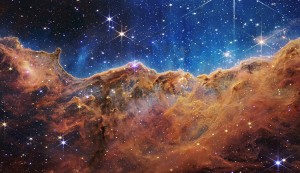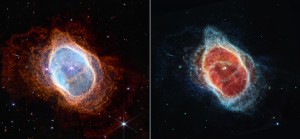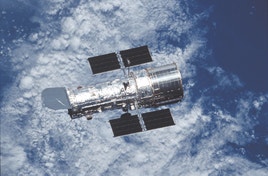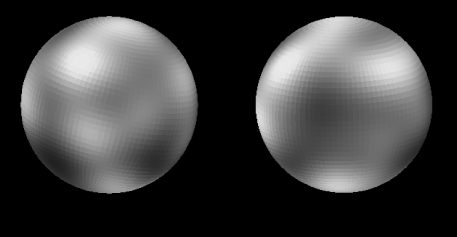No Filter for these Nebulae
Monday, July 18th, 2022The first images from the James Webb Space Telescope have arrived! They are starry, stellar, and dazzling images of never before seen nebulae and star-forming regions of the universe. The images are quite the upgrade from the images taken by the Hubble Space Telescope, showing deep space in exquisite detail. U.S. President Joe Biden released the first images on Monday, June 11, 2022.
The James Webb Space Telescope was successfully launched into space atop an Ariane 5 rocket on Dec. 25, 2021. The James Webb Space Telescope, abbreviated JWST, is an observatory replacing some capabilities of the Hubble Space Telescope. The Hubble Space Telescope is a powerful orbiting telescope that provides sharp images of heavenly bodies. Webb’s main mirror is 6.5 meters (21 feet) across. Webb will have about seven times larger light-collecting area than Hubble. However, Webb is designed to study infrared light, a type of light wave with longer wavelengths than those of visible light. Thus, Webb will not replace Hubble’s visible light capabilities.
Webb is a collaboration between the National Aeronautics and Space Administration (NASA), the European Space Agency (ESA), and the Canadian Space Agency (CSA). The Space Telescope Science Institute, which currently operates Hubble, is managing Webb’s science operations. The telescope is named after James Webb, the former NASA administrator who conceived and directed the Apollo program for most of the 1960’s. Webb has been a work in progress since 1996 and its deployment was delayed many times over the years.
The Webb telescope will enable scientists to study the history of the universe, nearly all the way back to a cosmic explosion called the big bang. It will collect information on the first stars and galaxies that formed after the big bang, the formation of planetary systems, and the evolution of planets within the solar system.
The first images NASA released show a star-forming region in the Milky Way called the Carina Nebula captured in infrared light. A nebula is a cloud of dust particles and gases in space. The term nebula comes from the Latin word for cloud. Other images show the Southern Ring Nebula in near-infrared light and mid-infrared light. This image shows the remains of a white dwarf star, similar to our Sun.
Webb is equipped with several specialized cameras and spectrometers, instruments that spread out light into a band of wavelengths called a spectrum. Astronomers can study such a spectrum for signs of light given off by certain molecules or atoms. Webb also has a primary (main) mirror made of many segments, which was folded up to fit in the launch rocket. The mirror is to unfold and adjust to its proper shape before Webb reaches its permanent orbit. A large sun shield, about the size of a tennis court, will help prevent the infrared light from the sun, and the reflected sunlight from Earth and the moon, from interfering with observations. Webb is specifically designed to cool down its sensors to gather better data.
After launch, Webb traveled to a Lagrange point, a special point in space where the gravitational pulls of the sun and Earth are in balance. Webb is to remain there, 930,000 miles (1.5 million kilometers) from Earth, observing the skies for up to 10 years. During its primary mission, Webb is designed to be the world’s premier space observatory, used by thousands of astronomers worldwide.














